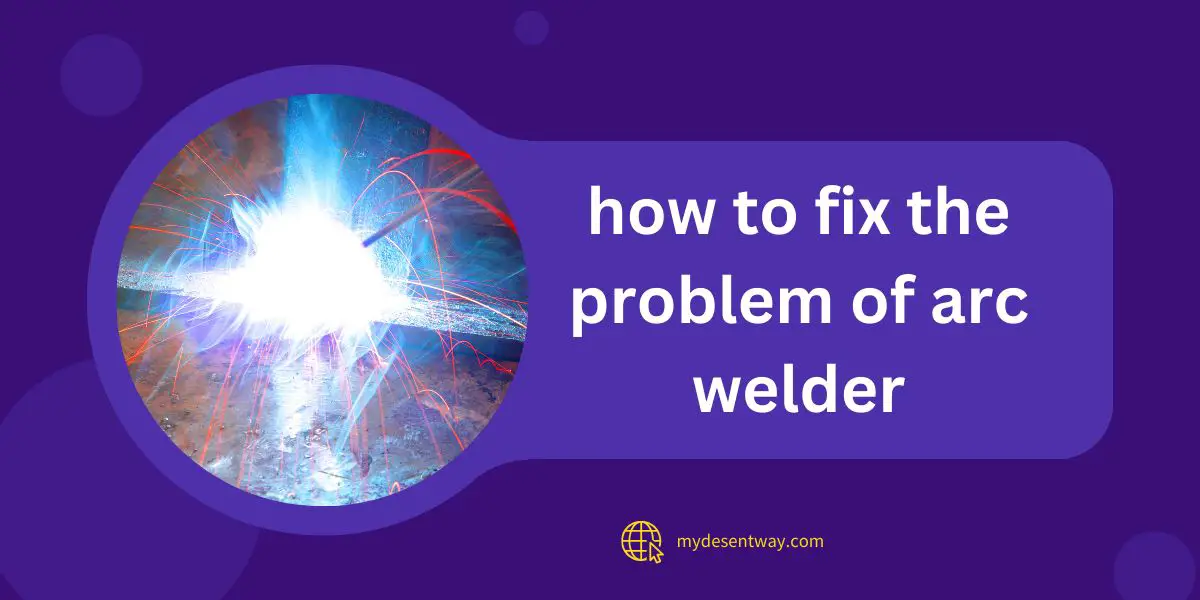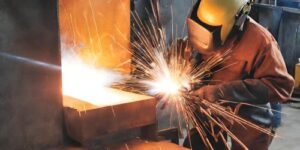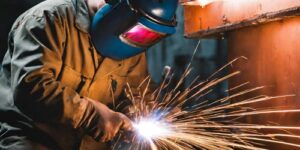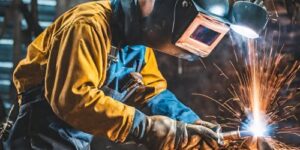Table of Contents
Arc welding is a crucial technique for many industries, from construction to manufacturing. However, like any other machinery, arc welders can face technical issues. In this comprehensive guide, we’ll explore how to fix the problem of arc welder. Whether you’re a professional welder or a DIY enthusiast, this article will equip you with the knowledge to troubleshoot and resolve common arc welding issues. Let’s dive in!
How to Get to Know Arc Welders
Before we delve into problem-solving, it’s crucial to have a solid understanding of arc welders. Arc welding is a process that uses an electric arc to melt and fuse metals. This technique generates high temperatures and requires precise equipment. To fix any issues, we need to be familiar with the components and operation of an arc welder.
Components of an Arc Welder
Power Source
Electrode Holder
Ground Clamp
Electrode
Welding Cables
Protective Gear
Common Problems with Arc Welders
Arc welders can face several issues that can affect the quality of their welds. Let’s explore these problems one by one.
How to Fix the Problem of Arc Welder
Poor Weld Quality
When you notice inconsistent welds or a lack of fusion, it’s likely due to poor weld quality.
Solutions:
- Check the electrode. Ensure it’s clean and dry.
- Adjust the amperage. Incorrect settings can lead to poor welds.
- Maintain a proper arc length. Maintain a consistent gap between the electrode and workpiece.
- Inspect the electrode holder and cables for damage.
Excessive Spatter
Excessive spatter refers to the unwanted splattering of molten metal during welding.
Solutions:
- Maintain the correct electrode angle.
- Use anti-spatter spray or gel.
- Adjust the wire feed speed and voltage.
- Clean the workpiece before welding.
Arc Blow
An arc blow occurs when the welding arc is deflected from the intended direction.
Solutions:
- Check the ground connection for cleanliness and tightness.
- Use magnetic grounds to prevent arc blows.
- Adjust the welding angle to minimize the effect.
Electrode Sticking
Electrode sticking happens when the electrode fuses into the workpiece.
Solutions:
- Use the correct amperage setting.
- Maintain a proper arc length.
- Ensure the workpiece is clean and free of rust or contaminants.
What to Do If the Arc Welder Stops Working?
If your arc welder suddenly stops working, it can be frustrating. Here are some steps to take to diagnose and address the issue:
Check Your Power Source: Ensure that your arc welder is properly connected to a reliable power source. Verify that all connections are secure and that the circuit breaker is not tripped.
Inspect the Electrode: A damaged or worn-out electrode can result in an unreliable arc. Replace the electrode if it shows signs of wear or damage.
Clean the Welding Surface: A contaminated or rusted welding surface can hinder the welding process. Clean the metal surface thoroughly before attempting to weld.
Inspect Cables and Connections: Check the welding cables and connections for loose or damaged components. Replace any faulty cables or connectors to maintain a steady electrical flow.
What are the common arc welding problems?
Arc welding problems can vary, but some common issues include:
Spatter: Excessive spatter can be a nuisance and affect the quality of your weld. Adjust the welding parameters and electrode angle to reduce the spatter.
Incomplete Penetration: Insufficient penetration can weaken the weld. Ensure proper settings, electrode angle, and travel speed for a more thorough weld.
Porosity: Porosity, or small gas pockets in the weld, can weaken it. Use the right shielding gas and maintain a consistent arc length to reduce porosity.
Undercutting: Undercutting occurs when the edges of the weld are eroded. Adjust the amperage, travel speed, and electrode angle to prevent undercutting.
Why is my welder not arcing?
Several factors can cause your arc welder to stop arcing. Here’s how to address this issue:
Incorrect Settings: Review your welding settings. Ensure that the amperage, voltage, and electrode type are appropriate for the material you are welding.
Electrode Sticking: If the electrode is stuck to the workpiece, it can prevent arcing. Release the electrode by gently tapping it or adjusting your arc length.
Faulty Ground Connection: A poor ground connection can disrupt the electrical circuit. Clean the grounding point and ensure a solid connection.
Electrode Contamination: Contaminated electrodes can hinder arcing. Replace the electrode with a clean, unblemished one.
Why won’t my stick welder maintain the arc?
Stick welders, or shielded metal arc welders, can face unique challenges when it comes to maintaining the arc. Here’s how to address this issue:
Electrode Selection: Choose the right electrode for your project. Different electrodes are designed for specific applications, so select the one that suits your needs.
Electrode Position: Maintain the correct electrode angle and drag or push technique, depending on the weld type, to ensure a stable arc.
Amperage Control: Adjust the amperage settings based on the thickness of the material you are welding. A higher amperage may be required for thicker metals.
Conclusion
Many businesses need to use arc welding because it is so flexible and useful. To keep working safely and efficiently, you need to know how to fix common issues with arc welders. In this piece, you’ll find tips and solutions that will help you deal with any problems that may come up during your welding projects. Keep your welding gear in great shape, and keep making welds that are strong and reliable. Happy welding!
video by cagmito76
FAQs
How can I prevent spatter during arc welding?




1 thought on “How to Fix the Problem of Arc Welder Like a Pro”